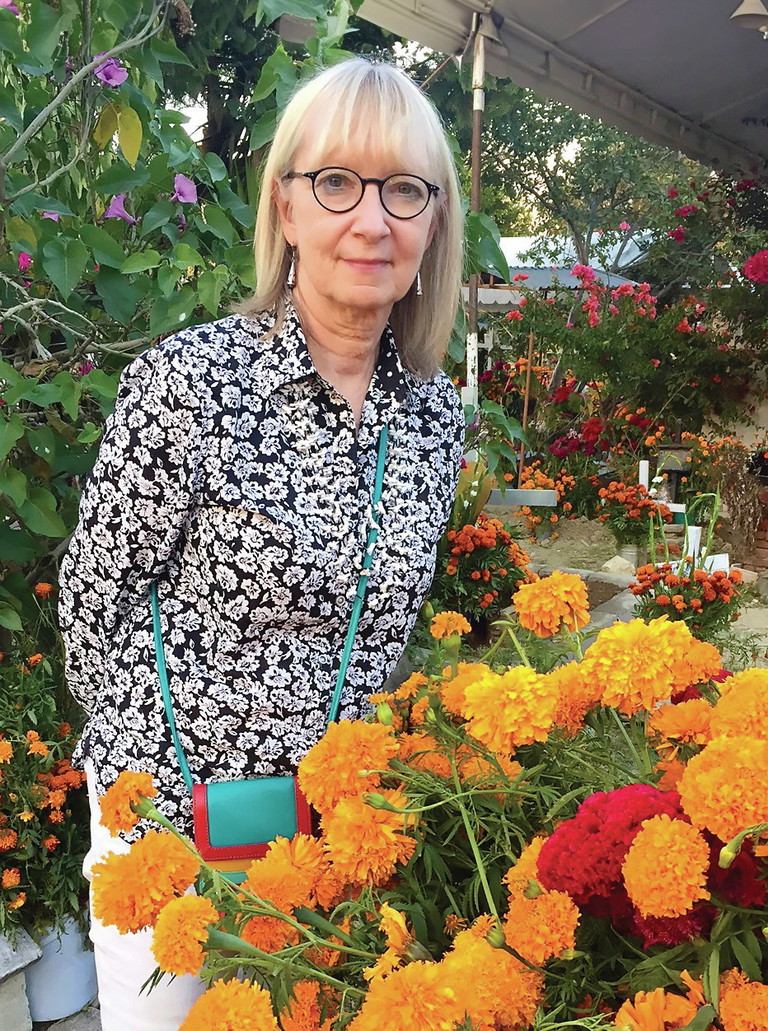EDITOR'S LETTER: APRIL 2024
Choice

Nancy in her community garden in Santa Fe, New Mexico.
In choice-based art instruction, a project typically begins with an assigned theme or the student’s own ideas. It is up to the individual student to decide how to respond to the prompt through choice of media and content. The student is responsible for self-directed learning. Similarly, in a Teaching for Artistic Behavior (TAB) approach to instruction, the student is considered to be an artist and the classroom is considered to be the student’s studio.
Victor D’Amico and the Children’s Art Carnival
Victor D’Amico (1904–1987) was a pioneer of modern art education and the founding director of education at the Museum of Modern Art in New York City. With Choice/TAB on my mind, I happened upon a copy of his 1942 book, Creative Teaching in Art, and looked through it for connections with Choice and TAB. I found plenty!
The book’s first chapter, “The Child is the True Artist,” starts with these words: “The concept of the child as artist implies that every child is a potential creator endowed with those sensibilities that characterize the artist…The teacher who regards the child and his art in this way possesses the key to every child’s creative growth.” Does this sound familiar?
D’Amico’s most influential program during his three decades at MoMA was the Children’s Art Carnival (1942–1969). It featured an exhibition and studio space with toys, artworks that could be touched, and modern masterpieces from the collection installed at a child’s eye level. Art supplies were included so that children could make work on their own.
This event was only accessible through childsized cutouts as it was just for children—no adults allowed. It empowered children to be selfdirected in making art through visual, tactile, and kinesthetic experiences. The Children’s Art Carnival now exists as a nonprofit in schools in Harlem in New York City. Wouldn’t this be fun to try in your school?
In This Issue
At the early childhood level, Susan Stein’s article “TAB from the Heart” describes the author’s mobile afterschool TAB program in which she teaches lessons based on the Studio Habits of Mind.
In the elementary lesson, “Unwanted Artwork Olympics,” Annie Zirin shares her challenge in which teams of students had forty-five minutes to create a project using as much “unwanted artwork” from the trash bins as they could.
David Anderson’s middle-school lesson, “The Lighthouse as a Symbol,” shares how his students used the concept of the lighthouse to create personal meaning in their chosen media.
At the high-school level, Nicole S. Herbst’s article, “Choice Sketchbooks,” details her art class based solely on the creation of a sketchbook art journal and her discovery that her students needed a combination of structure and choice to help them take ownership of their artwork.
Many thanks go to Clyde Gaw for co-editing this issue, his second time aptly acting in this role. Check out his blog, Transition to Choice-Based Art Education, at clydegaw.blogspot.com.
Nancy Walkup, Editor-in-Chief